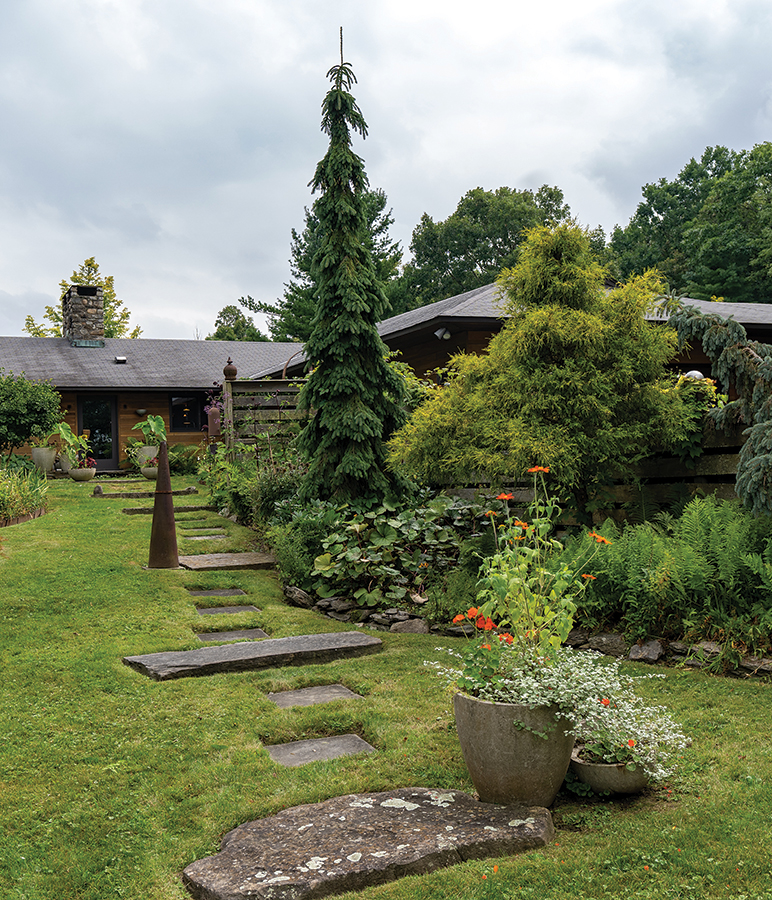

Mark McDonald didn’t invent Mid-century Modern, of course, but he is credited for putting it on the furnishing and decorating map. The sleek, spare, often curvaceous motifs were all the rage—and not so long ago. Still, at a time when American antiques collectors were interested in much older finds, McDonald gave mid-century pieces credibility. In the late 1970s, he’d landed an invaluable apprenticeship with Lillian Nassau, a specialist in Art Nouveau and Art Deco design, and specifically in the works of Louis Comfort Tiffany. McDonald, though, veered into a specialty in Mid-century Modern, immersing himself in exhaustive studies of the major and minor players in the movement. In 1983, he opened Fifty/50 on Broadway in Manhattan, a shop that spearheaded MCM’s surge to stardom. He is known as Mr. Modernism.
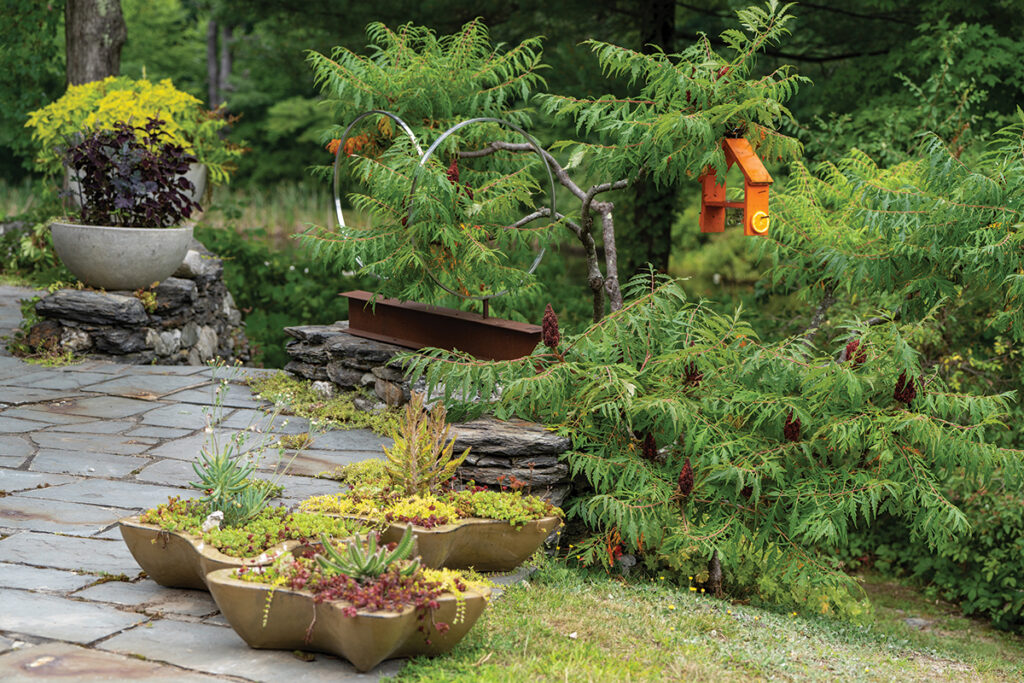
Being a Tastemaker required substantial energy, so, in pursuit of some quiet from the NYC art scene, McDonald bought a weekend house and began gardening its not-quite-acre of land on a busy street. The nearby town of Hudson, New York, was gaining its own place in the antiques world; McDonald eventually left the City to open a shop here. At that point, he and his partner, Dwayne Resnick, looked for a house with more land. They found Texas Hill.
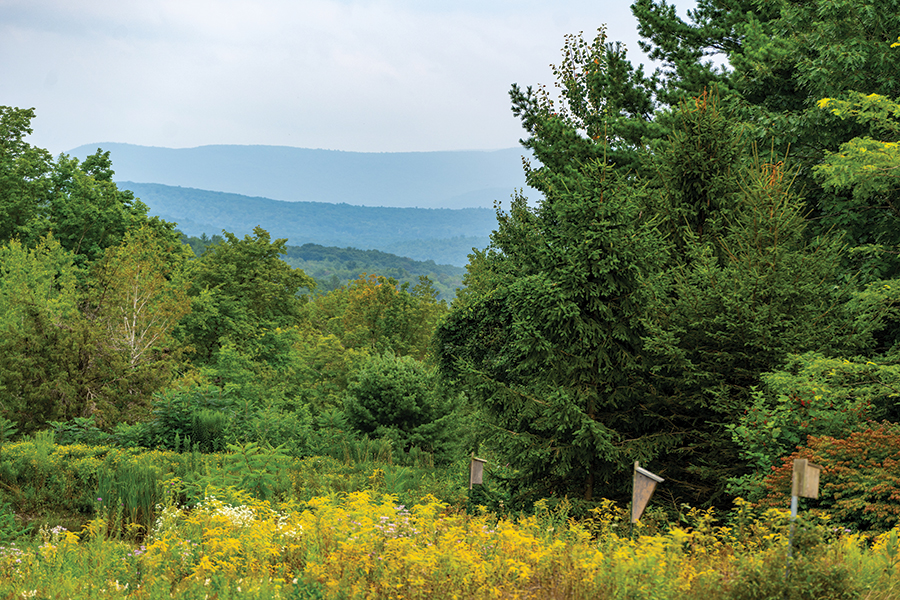
It was a stretch. “My initial reaction was, No way,” McDonald recalls thinking as he toured the 1967 Ranch. The house required extensive renovation and its 40-acre property desperately needed a plan to take it beyond forlorn courtyards and chain-link fencing. His roots as a furniture maker made him give it a go.
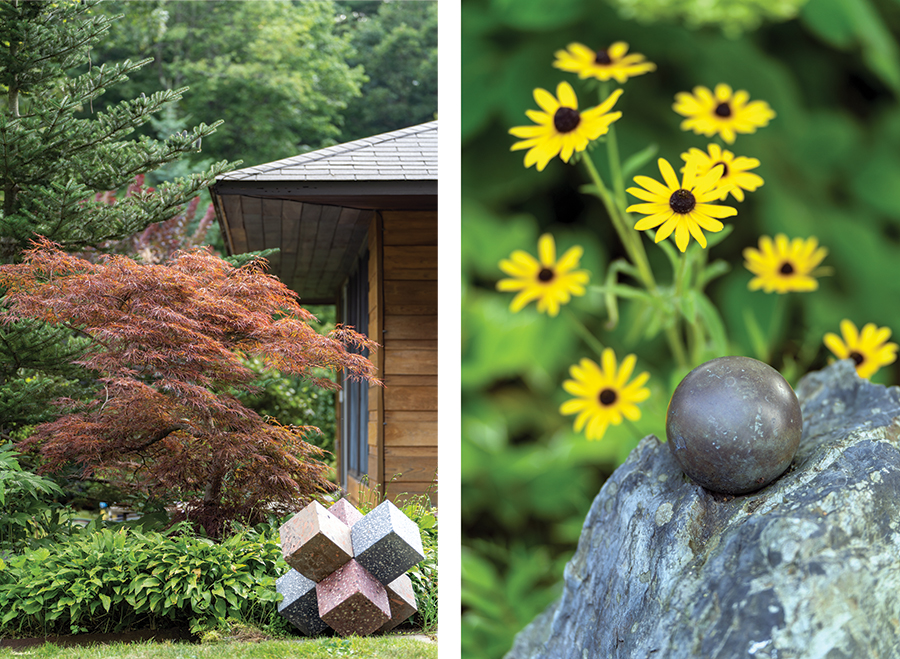
Right: Rudbeckia calls attention to one of the orbs placed in the garden.
Today, panoramic views over gentle hills near Hudson greet visitors to Texas Hill. Once that splendor has been enjoyed, attention turns to the plantings that frame the views. Gallerist and collector Mark McDonald turned his design acumen toward the landscape around the mid-century house.

“As soon as I started working on the house, I fell in love with it,” he says. Of the site, he adds, “We started with a beautiful canvas. Challenges, however, were abundant. With violent winds, brutally cold temperatures in winter, shallow soil barely covering extensive ledge, and views blocked by overgrown forest, the property required vision and reworking over years.
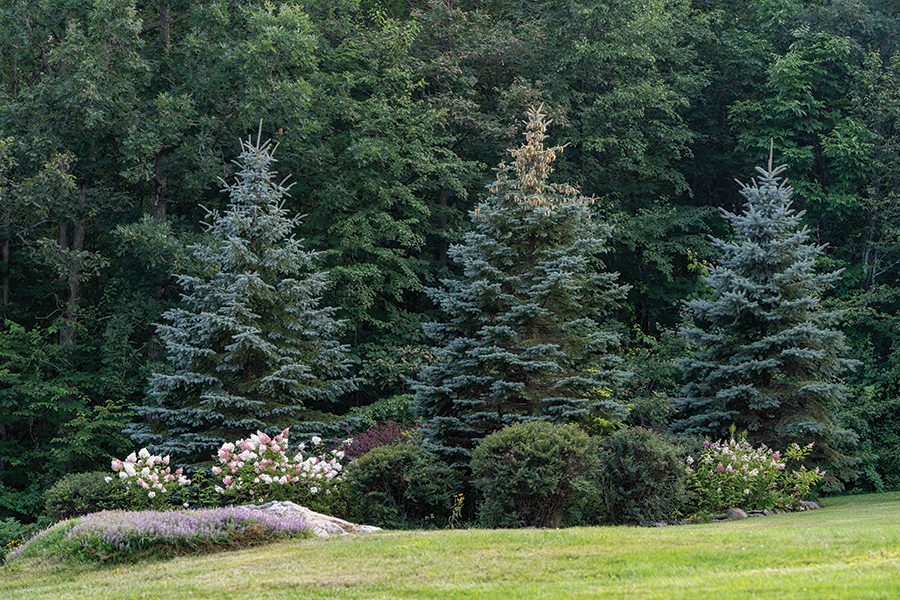
McDonald had mature plants, moved from the previous garden, as a head start. He and Resnick cleared obstructing trees to open the view. They purchased mature conifers and fast-growing magnolias to make a statement and to block the fierce northerly winds. Discreet deer fencing now protects the five acres immediately surrounding the house.
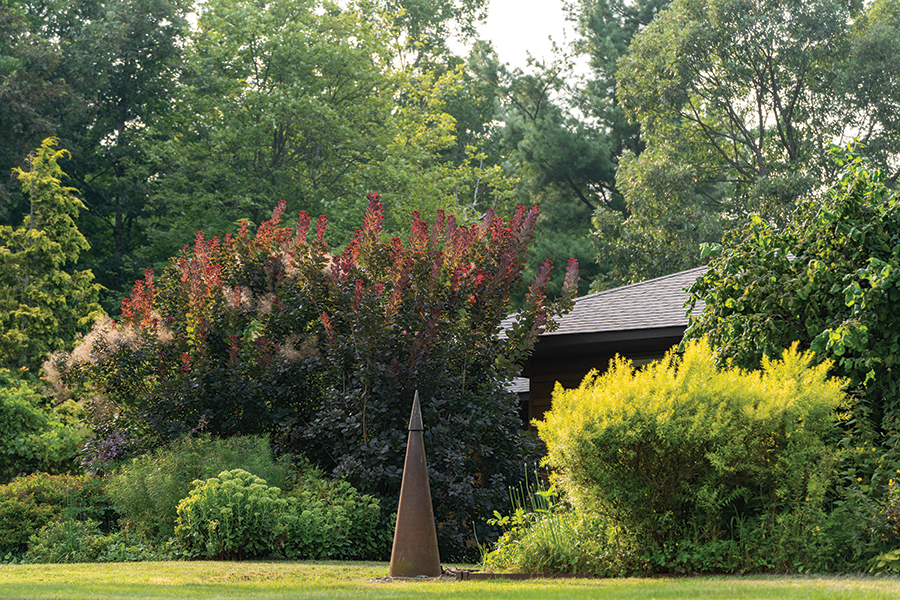
Newly designed courtyards, a vast improvement over the previous ones, segment the large space. A wooden fence runs up to the entry, shouldering shrubs and vines that give the garden height and breadth while the fence provides a strong sightline straight to the front door. The structure leads around the side of the house to the back terrace, where the view opens up dramatically. A hillside of undulating islands is planted with large perennials and leafy shrubs. Against the vast backdrop, it was important to go big and bold with plantings.
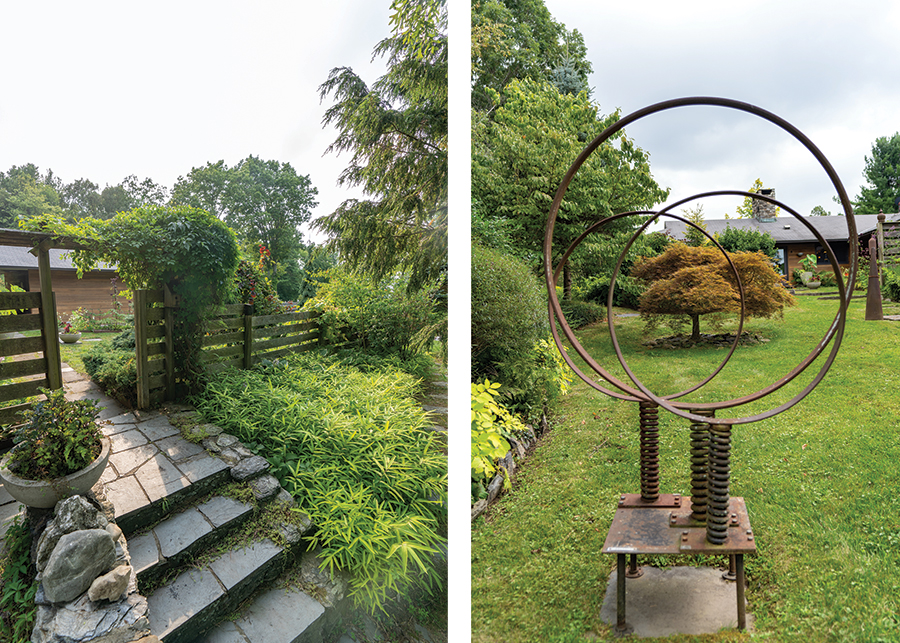
Right: Near the entry path, McDonald placed a three-ring kinetic sculpture of industrial-salvage pieces; it’s by Mark Wasserbach of Hudson, N.Y.
Selections are classic. McDonald carefully researched perennials, shrubs, and trees that would survive the challenging site while providing the chartreuse and burgundy accents both partners find appealing. The sculptures and container selections give this garden a unique personality. In a collecting coup, McDonald purchased 30 weatherproof containers from an estate in Westchester, New York, all quintessentially mid-century. He also sprinkled in orbs, obelisks, and cubes that feel apropos. Industrial-age metal elements are featured in cleverly delivered moments. The artistry is skillful and spare, so well integrated in nature that nothing feels forced or ostentatious. When sent outdoors to play, MCM is as engaging as it is inside.
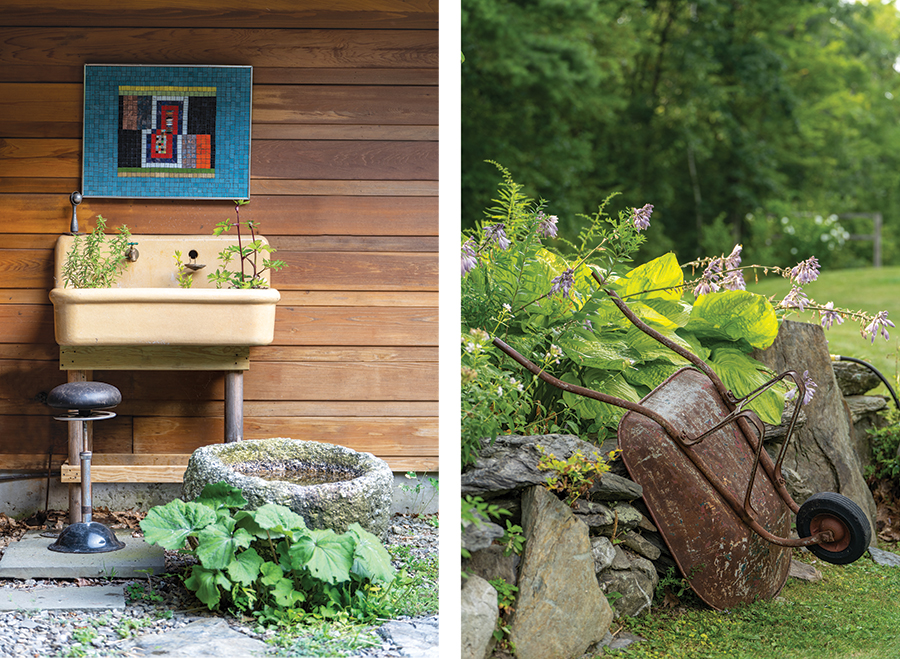
Right: A vintage wheelbarrow adds a sculptural note against a low, dry-laid stone wall.







